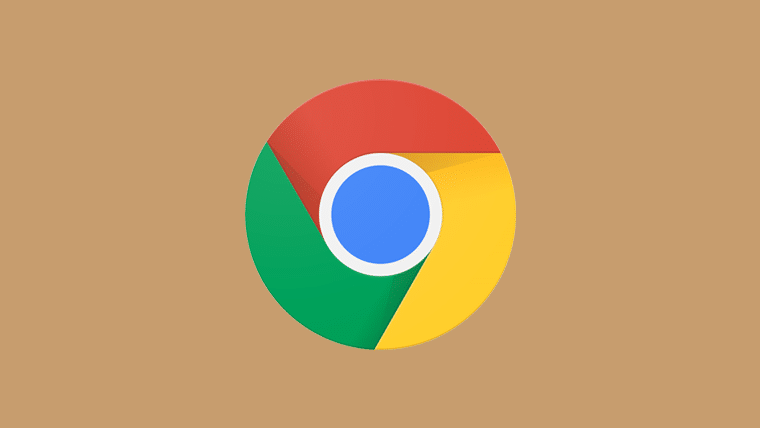
by Sotaria Agency | Sep 8, 2019 | Website Design
Like it or not Google web browser is the most popular web browser now available. As a web designer/developer you want to ensure that your web browser is customized to help you be the most productive and efficient that you can be. You want to build websites that can adapt to any device or browser.
Here is a list of my top Google Chrome Extensions that help me do just that.
ColorZilla is one of the most popular Google Chrome extensions available. All you have to do is hover over the color on the webpage to generate a color code. ColorZilla features a multitude of color tools for just about any needs you may have, including: an eyedropper, color picker, palette viewer, and a gradient generator.
Basically Identifies web technologies. It shows you the technologies used on websites. It detects content management systems, ecommerce platforms, web frameworks, server software, analytics tools and many more.
You will agree with me than no one wants a broken link. Broken Link Checker is a Chrome Extension tool that scans your page or the whole site and provides a broken links report within a few minutes. Then ‘Broken Link Checker’ highlights which links are functioning and which ones are broken.
It is a screen shot and video recorder in one. With this Google Chrome extension you can capture all or part of any web page. Add annotations, comments, blur sensitive info, and share with one-click uploads. Now with free desktop capture! You get options to grab the visible part of a page, the entire page or just a selected area. Captures can be instant, or delayed for a few seconds, perhaps giving you time to access some website feature.
When you submit an image to be searched, TinEye creates a unique and compact digital signature or ‘fingerprint’ for it, then compares this fingerprint to every other image in our index to retrieve matches. TinEye does not typically find similar images; it finds exact matches including those that have been cropped, edited or resized.
This Google Chrome extension helps you test multiple devices at the same time! The Mobile/Responsive Web Design Tester extension allows Web Designers and Developers to test their web pages against common mobile, phablet and tablet devices by adjusting to other screen resolution. Excellent for testing responsive web designs. You can easily switch between portrait and landscape mode and test multiple mobile device’s at the same time!
This extension apart from checking for broken links, is a powerful website auditor that can crawl 100s of pages in minutes for SEO, speed and security problems: uncover broken links, duplicate titles, invalid HTML/CSS/JavaScript, insecure password forms, redirect chains, mixed content errors and more.
This is a great SEO extension tool on Chrome and Firefox browser, which shows you Keyword Search volume, CPC – cost per click, and Competition of that specific keyword. It saves the time of Keyword researching. It shows you exact numbers how much people are searching for a keyword.
This Google Chrome extension allows you to test ping, upload and download speeds with just one click without leaving the page you’re on. It will also test the page load speed of the site you are currently viewing. This is a very clever feature if you are having speed issues and want to determine if it’s your connection or the website you’re viewing.
It helps you create visual harmony and rhythm across an entire piece of visual media like your website. What more, it can be configured to work with other popular grid systems like Bootstrap, Skin, Pure, Susy, Foundation, and many more.
At the end of the day the extensions you choose should help make your work easier and more pleasant, choose the ones that blends well with your workflow.
To find out more about our Web Design, Blogging, Content Provision and SEO services contact us on 2348171264175 or Click here for our pricing.

by Sotaria Agency | May 18, 2019 | Small business, Website Design
Enough whitespace:
Your website design should be simple but appealing. Do not use too much information or too complicated a design can overwhelm the viewer. Enough space in your design shows professionalism. It gives your websites room to show off and your audience a beautiful experience.
SEO:
A professionally designed site, clear content, proper URLs, sitemap, and relevant keywords will allow search engines like Google to index your small business website with ease. SEO is a must for a small business website. That’s why it is important to get a company experienced in SEO for the job.
Responsive Design:
After Google’s announcement of mobile-first index, it would be almost suicidal not to have your small business website responsive. This merely means that your site will adapt and rearrange when viewed on mobile devices. But that in itself will not make your website mobile friendly. You will need to insure that your website provides a user friendly experience across all devices.
Inbound Leads:
One of the most important functions of any small business website is to focus on the inbound leads and capture as many as possible. Usually before purchasing a product people like to do an initial research and comparison, and may not be ready to buy immediately. This time should be utilized in acquiring their e-mail addresses so that you can keep them informed and gauge as to when they are ready to purchase. However, you should avoid being too persistent as this could annoy a potential customer.
Contact details easily visible:
A web page should “responds to” or resizes itself depending on the type of device it is being seen through. That could be an oversized desktop computer monitor, a laptop or devices with small screens such as smartphones. This may seem obvious it tends to overlooked.
Contact:
Your phone number and e-mail address should be a priority on the website and, if possible, at the top and bottom of every page. There should also be a ‘CONTACT’ page which includes not just the contact numbers but email address, physical address of the company, and a map, along with directions to and hours of operation of your company.
Branding:
Your website should blend with your brand logo. Preferably, hire a design agency, to give your website a professional look. Your graphics and images should be in sync and complement the website.
Speed:
Website speed an important factor for the usability of a website, as well as the SEO.
A slow website will deter users and force them to use your competition instead. This is the primary reason that it is one of Google’s key search algorithm factors.
Viewers get impatient if a site takes too much time to load. A graphically intense design could eat into your loading time and put off prospective customers. Site load time can also be improved by picking up good hosts.
Content:
Content is indeed king. Not just what your content is but how you use it. It is a major factor for being indexed by search engines. The more qualitative and quantitative your content, the easier it is for search engines to find and index your site. Your headings need a lot of attention as this will decide the difference between a visitor leaving your site or continuing further to browse the rest.
Not having a small business website can impact your business. A small business without an online presence will find it hard to compete and miss a lot of opportunity to connect and engage with prospective customers. Most customers would go online to find information on products and companies before actually buying. More customers than ever are buying from websites than physical stores.
Hope these tips have been helpful.
To start a project, for enquiries or support, please contact us or call us at 2348171264175
by Sotaria Agency | Apr 7, 2019 | Website Design
People spend most of their time on smartphones so it’s no longer enough to have a website that only works from a desktop computer. A responsive website is now a must.
What is a responsive website
design? A responsive web design automatically adjusts for different-sized
screens. With a responsive website, someone can browse your website from any
device and it functions to suit the device.
How Do Responsive
Websites Work?
A responsive website applies an alternate set
of CSS files depending on the device being used to access the site. The
site looks and ‘responds’ differently based on the device.
In summary, the site content is designed to
suit the various types of devices that might be used. Whether a big or smaller
screen.
Why
Responsive Web Design Is Important
There was a time when people only accessed
websites from a desktop computer which had the same size monitor. Today, people
access websites from a variety of different devices with screens ranging from a
few inches all the way up to 27″ or more and expectations have changed.
Consumers expect the website they’re visiting to know that they’re using a
tablet vs. a PC. They expect the site to adjust to them—not the other way
around.
Why Your Business Needs a Responsive Web
Design
Studies
have confirmed that any business—whether you’re small, medium, or
enterprise—needs to have a responsive website if they want to gain a
competitive edge now and maintain it later.
Responsive Website Design And SEO
Google uses mobile-friendliness as a ranking symbol, meaning mobile-friendly, responsive websites appeared higher in the search results. There have been a few updates since then, each one including mobile-friendliness as a key rankings indicator.
It’s simple—better rankings lead to more visits to your website, which results in more leads and sales
Need help with a project or free consultation, contact us or request a free quote as we would love to help.

by Sotaria Agency | Mar 24, 2019 | Website Design, Website Maintenance
A website is a necessity for businesses today and that need isn’t going anywhere soon. Customers are a huge traffic on the internet daily browsing for their essential products and services. One reason why your website design.
You may have what the customers want but do they know how to reach you? That is why owning a website is the best way to lead them where you are.
Here are some of the common mistakes below:
Do-It-Yourself Website (DIY)
Some businesses go the route of free DIY websites or just pay a friend to do the job.
Web design is a skill you learn just like any other business industry and believe me, I know by experience Having access to a free template and pulling anything together is not going to give you the sight you have envisioned.
What about the content? Google’s search algorithms have become more complicated and now raising rankings for sites that utilize effective content marketing tactics. Do you have any experience writing your site material according to those standards?
Your Website Is Not Responsive (Or Has Mobile Issues)
Nearly 60% of all searches on Google are performed on a mobile device. Fact! More people use their phones to browse the internet and especially when it comes to finding a product or service. Which is why it’s absolutely important that you have a responsive website design.
Luckily, Google provides a great tool for testing mobile responsiveness. To test if your site is responsive, please use their handy tool by clicking here.
Bad Photography & Other Media
Photos on your
website create perhaps one of the strongest impressions
Visitors come to your website are not there for a reading lesson, they mostly want to see. Humans are very visual you know lol so are visitors going to like what they see?
A high-end smart phones will get you ok pictures but for the best result, hire a photographer and get some really great photos with better quality.
Make sure to plan in advance what photos you are going to take and why; each photo should serve a unique purpose for being used on your website. An embedded video on your page is also great as some visitors would rather watch.
There are also alternatives for finding quality images. Websites like Unsplash, and Pexels all provide free to use high quality photographs for your business but it’s important that you add original photography of your products and services.
Contacting You Via Website
Your contact page should always be one click on your website and display your phone number, address and link to contact forms in easy to find areas.When it is time for the visitor to become a
customer, make it easy for them! Include your address,
hours, so visitors can find you right away.
Poor Website Layout
Directing user’s eyes around your website can make-or-break the quality of your site.An inexperienced designer is might just dump text on the website and make a cluttered mess.
Every webpage should have an identified purpose and the text should be simple to navigate and easy to read. Above all, nothing on your website should be unnecessary, incorrect, or out-of-date.
Too Much Information on a
Single Page
Website design is now more about clean, efficient pages. The best way to turn away users is by cluttering your website with products, descriptions, articles.
Do not run the risk of over-informing your customers via blog or other means. Never hoard information but always leave some room for customers to contact you.
No Clear Call to Action
A call to action is
how you close your sale. You are asking or suggesting to your users to purchase a product, sign up for your email, request a quote, or otherwise contact your company.
All of your site content should be leading to why they should give you their business and the call to action tells them the next step.
In the end, owning a website is one marketing tool you can’t miss out on for your business. The effort you put into building your website shows the result you get. A site that gains relevant traffic is going to increase the profit of your business.
If you are looking for web design experts you can count on, advice about building, redesigning or maintenance of your website, or to learn how to improve your search rankings and increase business, please contact
us online or call us at 2348171264175

by Sotaria Agency | Jan 30, 2019 | Website Design
Now you have the perfect website design, how do you ensure it the lean, mean machine it should be? Here are some short and sweet tips.
1. Make your website a lead generation machine.
One important function of website is to capture leads. Every single page on your website should be focused around capturing new leads by obtaining name and email at the very least.
2. Email marketing to follow-up your leads.
Now you have captured those leads, you need to build an email marketing follow-up system to stay connected to them.
3. Blog, blog, blog to build search engine presence.
To get email leads that can grow your business, people need to visit your website. To get website visitors, you need to blog. Your client is out there searching Google to search for what they want. One of the top ways to show up in Google results is to blog about lots of topics your customers need.
4. Stay abreast SEO rules.
You may have read a few things about SEO. The SEO principle you should practice is stuff about quality and value. It’s all about content, authority, and gaining reputation.
5. An active presence on the top social media networks.
When your prospects aren’t using Google, they’re using Facebook, Instagram, Twitter, LInkedIn, and. You need a presence on at least 3 of these top 5 networks, choose 2 you can be really active on. You should be updating them several times each week or even every single day if possible.
6. Content Is King!
This is the golden rule of marketing — Content Is King! It really is more about quality content than quantity. You need to follow this rule your digital platforms : email, blogging, social media, web content, etc.
7. Offline marketing and online marketing work together.
Do not give up entirely on offline marketing. Mouth to mouth referrals, business cards, networking and print media if your up for it.
7. Experiment, test, track, measure, and improve your results.
This what puts website marketing on top of the game. With all these data at your finger tips, tracking and analyzing is far easier. Always measure what you are doing to see the best results.
Time to take action
Time to get started on the list. If you don’t have a website yet, contact us to get you plugged in this huge marketing opportunity. Click on our FAQ for more answers.

by Sotaria Agency | Jan 4, 2019 | SEO, Website Design
1.Your Content Must Be Relevant
Quality content is a must to rise to the top of search engine rankings and there is no substitute for it. This increases site traffic, which improves your site’s ranking and relevance. Work on your writing skills or get a content writer.
Research and use a keyword phrase for each page. How might your reader search for that specific page (with phrases like “Website designer in Lagos,” “website designer or developer,” or “Lagos web designer”). Now repeat the research phrase several times throughout the page.
Emphasis and highlight these keyword phrases—but don’t overdo it.
2. Update Your Content Regularly
Content is very important to Search engines. Updating regularly is an indication to search engines how relevant your contents are so keep your content up to date.
3. Metadata
When designing your website, each page contains a space between the tags to insert metadata, or information about the contents of your page.
Title Metadata
Title metadata is responsible for the page titles displayed at the top of a browser window and as the headline within search engine results. It is the most important metadata on your page.
Description Metadata
Description metadata is the textual description that a browser may use in your page search return. It gives a concise and appealing description of what is contained within, with the goal of encouraging people to enter. A good meta description will typically contain two full sentences.
Keyword Metadata
Keyword metadata is rarely if ever used to tabulate search engine rankings. However, you should already know your keyword phrases, and add them to your metadata. Try to keep it to about 6-8 phrases with each phrase consisting of 1-4 words. A great example would be “website design Lagos.”
4. Have a link-worthy site
Your links should be relevant and within the text, not just “click here” links,- write out the name of the destination. For example “Sotaria services include” will improve your search engine rankings as well as the ranking of the page you are linking to.
5. Use alt tags
Always describe your visual and video media using alt tags, or alternative text descriptions. They allow search engines to locate your page, which is important for visually impaired readers too.
These are just some tips out of the many methods for improving your search engine ranking. You can learn more by using the resource below:
www.google.com/webmasters/tools




